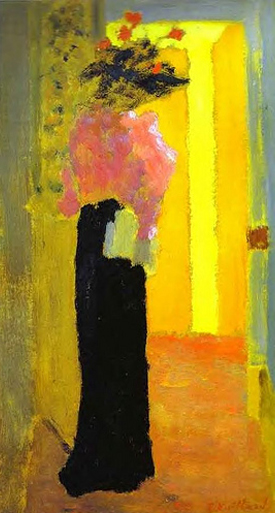Vuillard and Bonnard were more than just chroniclers of bourgeois fin-de-siecle Paris, Andrew Graham-Dixon argues. They painted states of mind
A well-dressed Parisienne stands in a bourgeois domestic interior and finds herself suddenly confronted by the unknown. Rapt, in pink blouse and long black skirt and an extravagant flower-sprouting example of the fin de siecle milliner's art, she is an unlikely and involuntary witness to the mystery of things. Edouard Vuillard's L'Elegante, painted circa 1891, has been made to seem on the brink. But of what, exactly?
She seems casual but also transfixed, hypnotised by the spectacle of sunlight, which has been rendered by the artist as a solid column of bright, fatty, butter-coloured paint filling the crack between a pair of half-opened orange shutters. Silhouetted, almost dissolved by the radiance that surrounds her, she stands on the threshold of a bright and weird nothingness. Wraith- like, barely substantial, made of paint that seems itself to hover and tremble, she is nevertheless a monument, the image of what we all know ourselves to be: matter poised on the edge of its own dissolution, that final unbecoming which, the beautiful ominousness of the picture suggests, can seem both a promise and a threat.
L'Elegante is exhibit 153 in the huge survey at the Grand Palais, Paris, of the work of Les Nabis, a group of young, mostly French painters who decided some time in 1888 that they had enough in common to declare themselves an art movement. United by admiration for Van Gogh and Gauguin, as well as by certain vaguely formulated spiritual values inherited from some of the more eccentric sects of their times such as Theosophy, the Nabis took their name from the Hebrew word for prophets. But they were not all blessed with visionariness. Serusier and Denis, Ransom...


